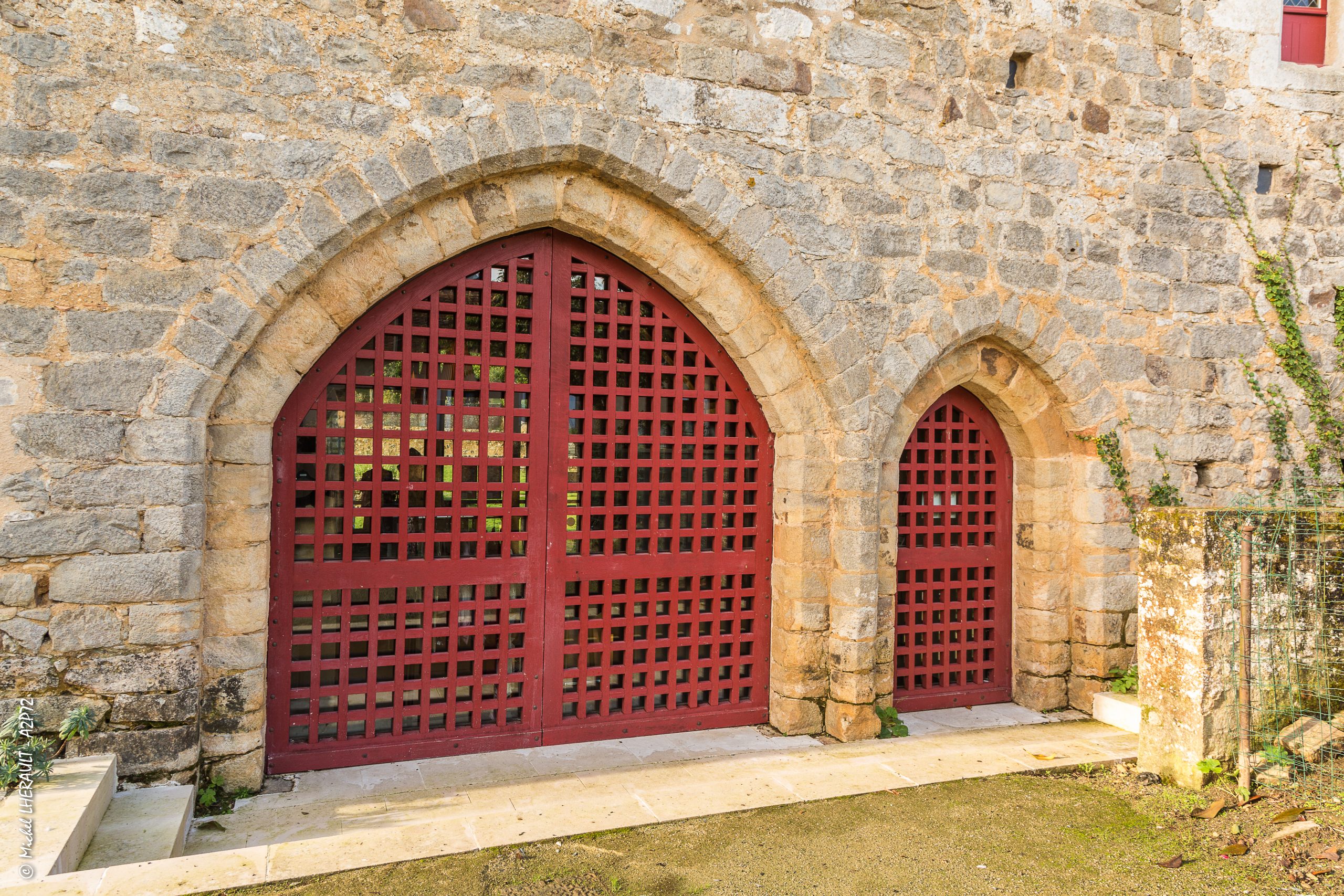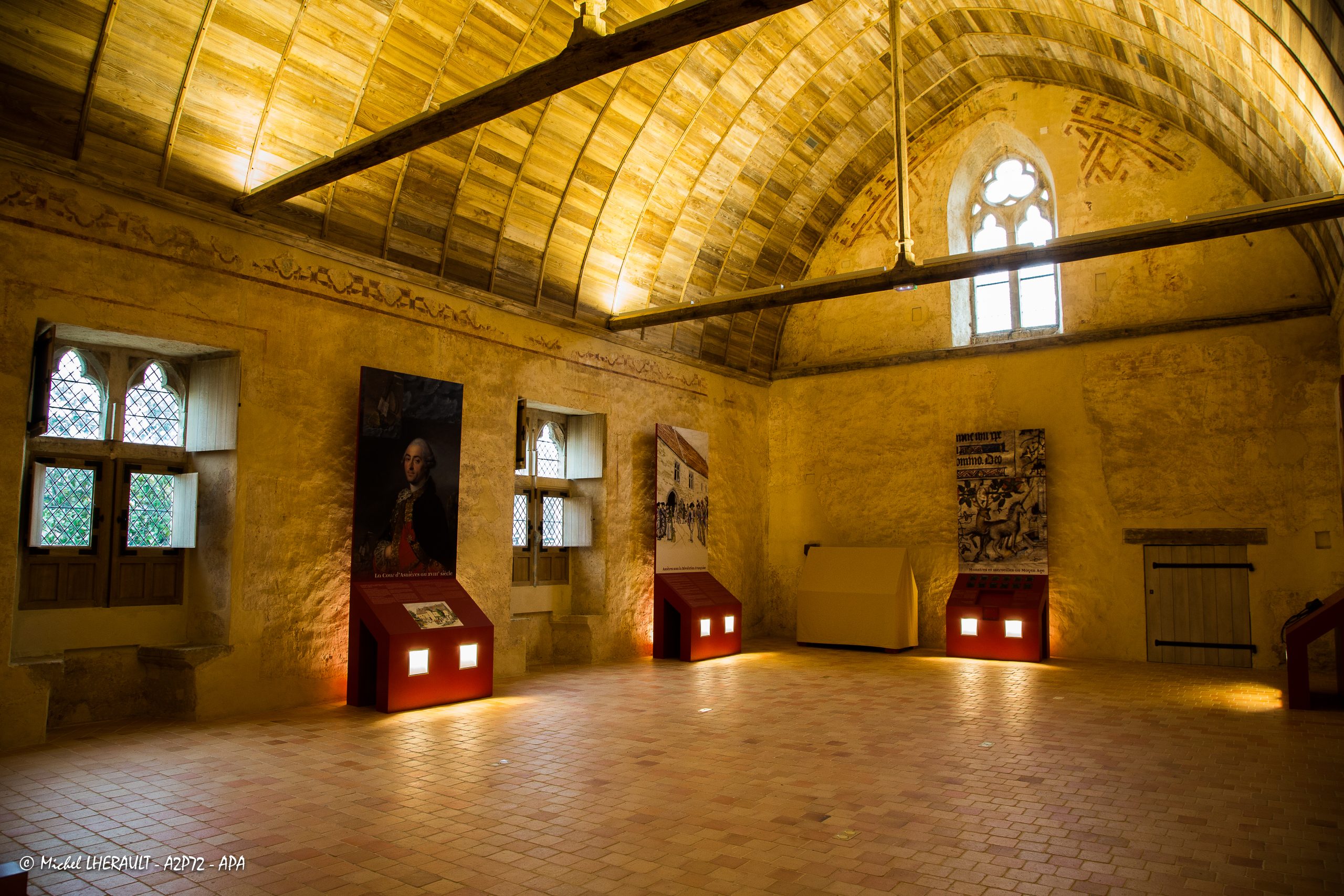AN ARISTOCRATIC RESIDENCE AND A PLACE WHERE SEIGNEURIAL POWER WAS EXERCISED
Built for noblemen
It was in fact an ambitious commission from the canons of Le Mans cathedral chapter. These men from the wealthiest aristocratic families in the historic region of Maine farmed the land of the chapter and made a good living. The construction of the La Cour building between 1293 and 1298 symbolised the peak of this ecclesiastical power over the Asnières-sur-Vègre fiefdom.
EVERYDAY LIFE IN THE FIEFDOM AS TOLD BY SURPRISING ARCHITECTURE
A power representation room
The large ceremonial room, known as the ‘Salle des Plaids’ is where seigniorial power would be exercised and represented. This impressive room with a surface area of 100m² and 11 metres high boasts plenty of ostentatious details such as the low windows with stone window seats, a pointed arch bay window and wall paintings.
Well-preserved wall paintings
Much like the interior of the neighbouring Church of Saint-Hilaire, the canons also commissioned a series of wall paintings in the late 13th century, and some fragments of them can still be seen today. Using archaeological findings and thanks to expert advice from art historians and archaeologists, the entire series of these paintings has been recreated in 3D on-site.
FROM CENTRE OF MEDIEVAL POWER TO A VISITOR’S CENTRE IN THE 21ST CENTURY
From seigniorial residence to lodgings for labourers
During the uncertain times brought on by the Hundred Years’ War in the 15th century, La Cour changed hands and became a simple aristocratic place of residence. Some building work was done on the monument, including a stairway turret and a new fireplace on the ground floor.
In the 17th century, the manor was abandoned, replaced by other residences that were more adapted to the times, and it became a tenant farm, managed by the farmers when the French Revolution broke out. In the 19th century, it was used as the town hall, and then as lodgings for labourers.
Renewed interest in the monument in the 21st century
Local scholars took an interest in the monument in the 19th century, but it wasn’t until it was purchased by the local council of Asnières in 1973 and thanks to the Asnières heritage association, that it was listed as a Historic Monument in 1991. It was used as a community centre and the future of this exceptionally well-preserved building was discussed.
20 years of renovation work
Renovation work began in 1995, along with archaeological research that helped to find out more about the history of the site, and the latest developments began in 2013, including renewed archaeological research. The restoration of the monument was awarded the national Rubans du Patrimoine prize for 2017.
A medieval fiefdom visitor’s centre
Since it opened to the public in 2016, the Manoir de la Cour has been given a new lease of life. The exhibition tour has been translated into English, and is an educational, interactive experience to learn all about the historic and archaeological findings.
The manor is in the perfect location in the medieval village of Asnières-sur-Vègre, and the visit and various activities on offer are a chance to experience everyday life in the Middle Ages.












